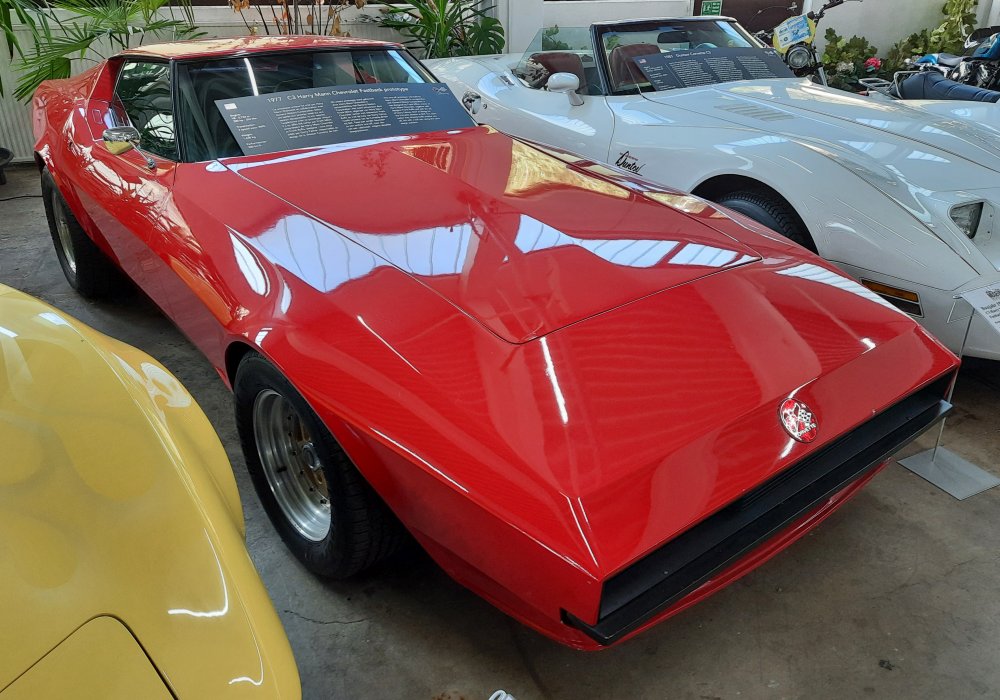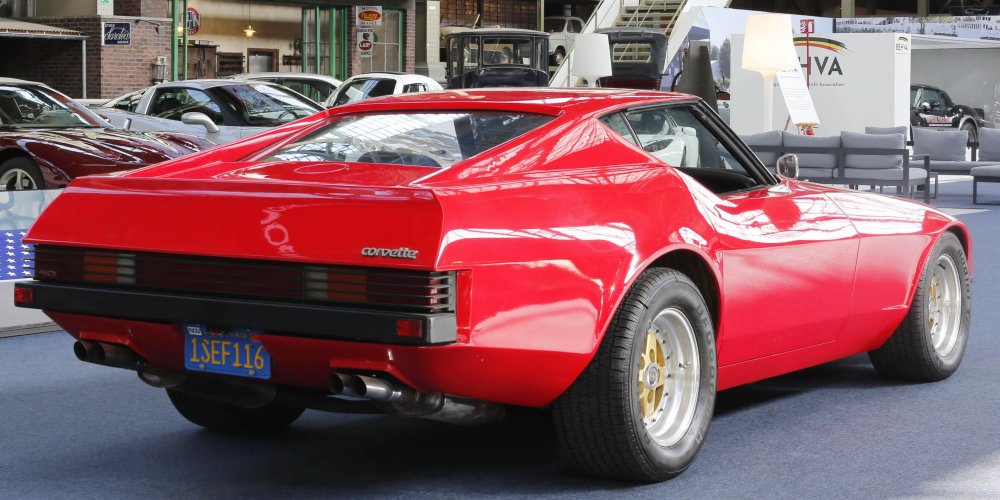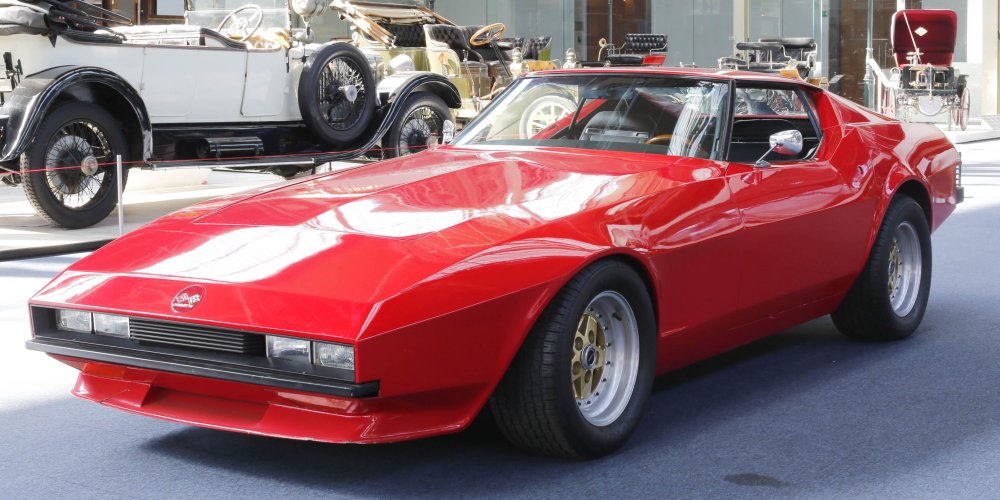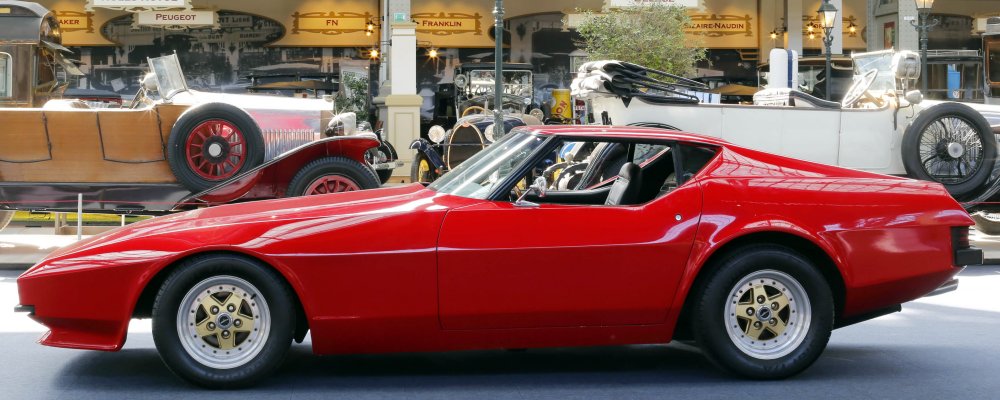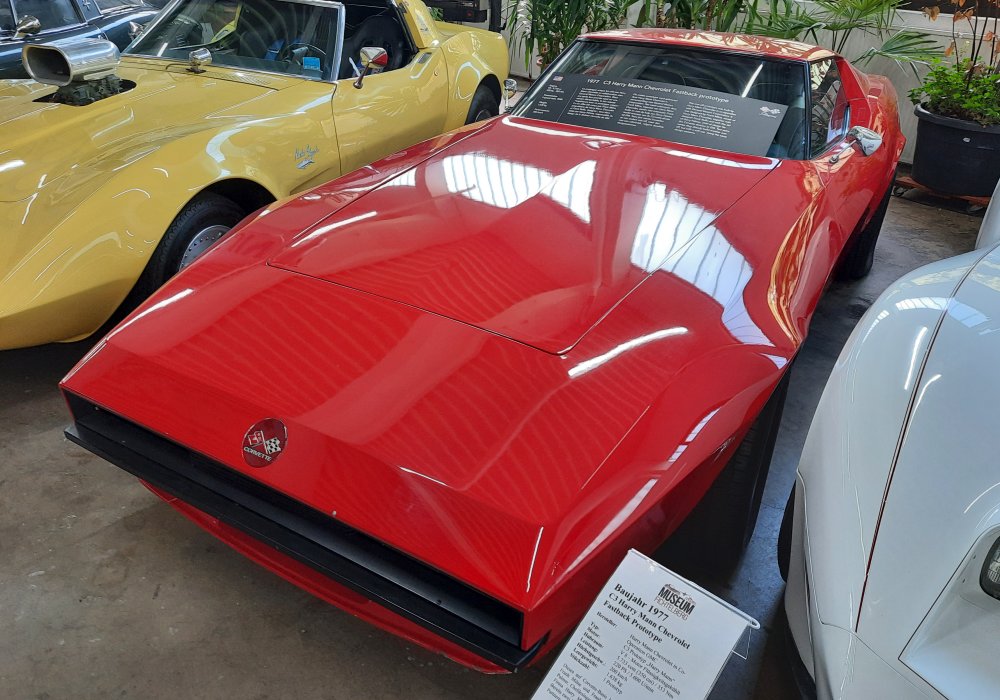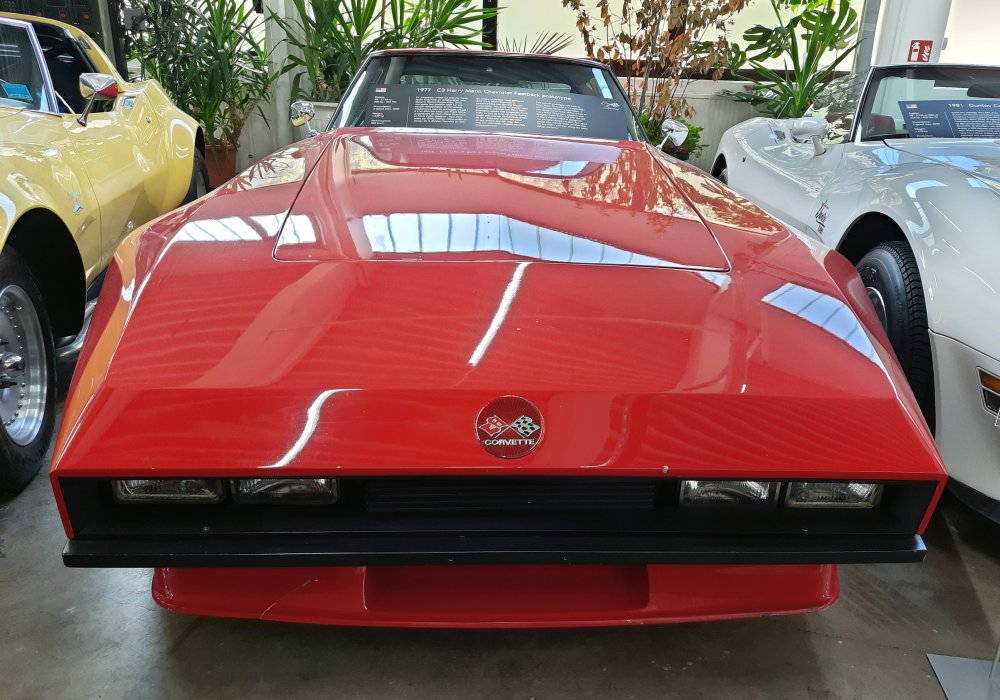Description
The Harry Mann Fastback prototype began life as a 1965 Corvette Sting Ray coupe, one of the cleanest fastback designs Chevrolet had produced up to that point. Mann saw an opportunity to refine the already sleek roofline and create a one‐off that blended the stiffly sculpted C2 silhouette with custom coachwork. To achieve this, his team retained the factory’s fastback rear window and roofline but recontoured the sheetmetal ahead of the quarter panels. This subtle reshaping smoothed out the transition between the roof and the rear deck, eliminating the small kink at the trailing edge of the stock fastback and giving the car a more continuous, wind‐cheating profile. Underneath, no major structural members were removed; instead, additional reinforcement was welded into the rocker areas and lower backbone to ensure torsional rigidity remained at or above factory levels.
Beneath the smoothed fastback exterior, the prototype shared its mechanical setup with mid-’60s high‐performance Sting Rays. Most surviving photos show it carrying a 327-cubic-inch V8, typically in the 365- or 375-horsepower tune, bolted to either a four‐speed manual or a Turbo Hydra‐Matic automatic. Mann’s team added custom louvers ahead of the rear wheel openings to help vent the engine compartment and reduce lift at high speeds. The suspension geometry remained largely stock—double‐wishbone front and transverse leaf spring rear—but with upgraded springs and bushings sourced from Mann’s own parts stash, borrowed in part from Trans-Am–style racers he had worked on. Braking stayed with the factory four-wheel disc arrangement, though stiffer brake lines and upgraded pads were often fitted to handle spirited driving.
Inside, the cockpit retained Sting Ray cues—twin cowl dashboard, wraparound seats, and polished metal trim—but Harry Mann added a few bespoke touches. The headliner was finished in a contrasting leather to match the reupholstered seats, and the sun visors were re-shaped to follow the newly tapered roofline. A revised tonneau cover stored neatly behind the seats, designed to mirror the external fastback curvature when the convertible top was down. Controls and instrumentation remained stock aside from an optional factory tachometer, but Mann offered an auxiliary gauge pod for tracking oil pressure and water temperature—an upgrade borrowed from his track-day builds.
Although Chevrolet ultimately returned to building factory convertibles in 1966 rather than adopt Mann’s coachbuilt approach, the Fastback prototype remains one of the rarest “what if” Corvettes ever created. By smoothing and blending the edges of the C2 fastback roof, Harry Mann demonstrated how minor sheetmetal tweaks could refine airflow and aesthetics without sacrificing structural integrity. Fewer than a handful of these prototypes were ever built or even completed, and the surviving example—now in a private collection—continues to draw interest for its singular blend of factory‐scale engineering and independent coachbuilder flair.
